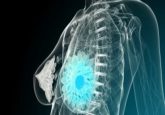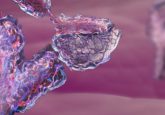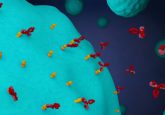Circulating extracellular vesicles may improve diagnosis & management of childhood leukemia
In a study published recently in Blood, researchers from The University of Manchester (Manchester, UK) have demonstrated the potential of testing for extracellular vesicles in an attempt to improve the clinical approach to the diagnosis and management of a common childhood leukaemia.
Suzanne Johnson (University of Manchester), lead author in the study, stated that acute lymphoblastic leukemia (ALL) cells form and release extracellular vesicles, which can be monitored in the blood of patients. Johnson investigated the presence of these structures in the blood through plasma from bone marrow biopsies and observed the ability of the vesicles to circulate in the blood using mouse models.
This discovery may have real effects on improving the diagnosis and treatment of this pediatric cancer.
Though there are high success rates associated with current standard of care for ALL – 85–-90% – children need to undergo bone marrow biopsies in order to monitor their progress. The team hope that by discovering the circulating potential of these actin-containing vesicles, which have the same characteristics as their parent cell, the frequencies of these biopsies could be reduced.
Johnson stated: “Our discovery of extracellular vesicles could be a game changer in terms of the way we care for children with lymphoblastic leukemia. Our research has shown that cancerous leukemia cells have the ability to package parts of themselves and then send these structures – vesicles – to anywhere in the body through the blood.”
“That opens up a world of possibilities in terms of monitoring the progress of the disease and making diagnosis quickly and efficiently. They are also internalized by other cells and act as an effective route for cell communication,” Johnson continued. “Now the challenge is to investigate whether other cancers produce and release these structures as well.”
Moving forward, according to Johnson, these data could have implications in terms of therapeutic delivery of anticancer drugs for ALL, if the treatments could be combined with the vesicles.
The researchers are also hopeful that in future these vesicles could further provide individualized information for the tumors, aiding clinicians in developing personalized care plans for leukemia patients.
“What is amazing is that vesicles were previously dismissed as mere debris from the cancerous cell, but we now realise this absolutely not the case. They are far more interesting than that,” concluded Johnson.





